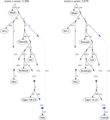
Size of this PNG preview of this WEBP file: 548 × 600 pixels. Other resolutions: 219 × 240 pixels | 438 × 480 pixels | 701 × 768 pixels | 935 × 1,024 pixels | 1,350 × 1,478 pixels.
Original file (1,350 × 1,478 pixels, file size: 85 KB, MIME type: image/webp)
File history
Click on a date/time to view the file as it appeared at that time.
| Date/Time | Thumbnail | Dimensions | User | Comment | |
|---|---|---|---|---|---|
| current | 09:28, 12 May 2023 |  | 1,350 × 1,478 (85 KB) | Wikiuser1314 | Uploaded a work by Chi-Chun Liu, David Witonsky, Anna Gosling, Ju Hyeon Lee, Harald Ringbauer, Richard Hagan, Nisha Patel, Raphaela Stahl, John Novembre, Mark Aldenderfer, Christina Warinner, Anna Di Rienzo & Choongwon Jeong from https://www.nature.com/articles/s41467-022-28827-2 with UploadWizard |
File usage
The following pages on the English Wikipedia use this file (pages on other projects are not listed):